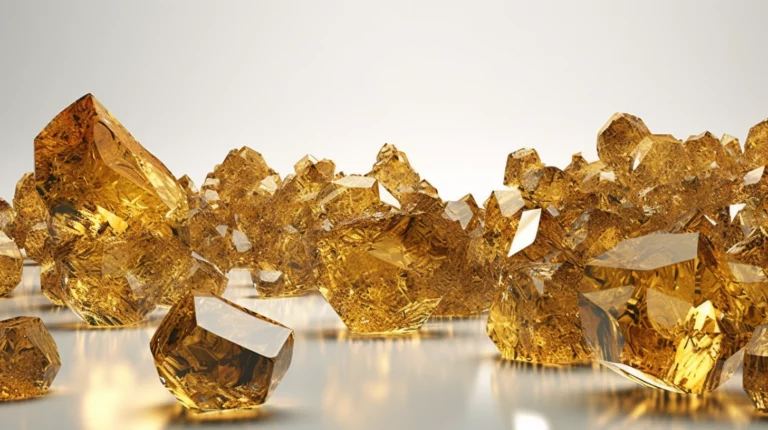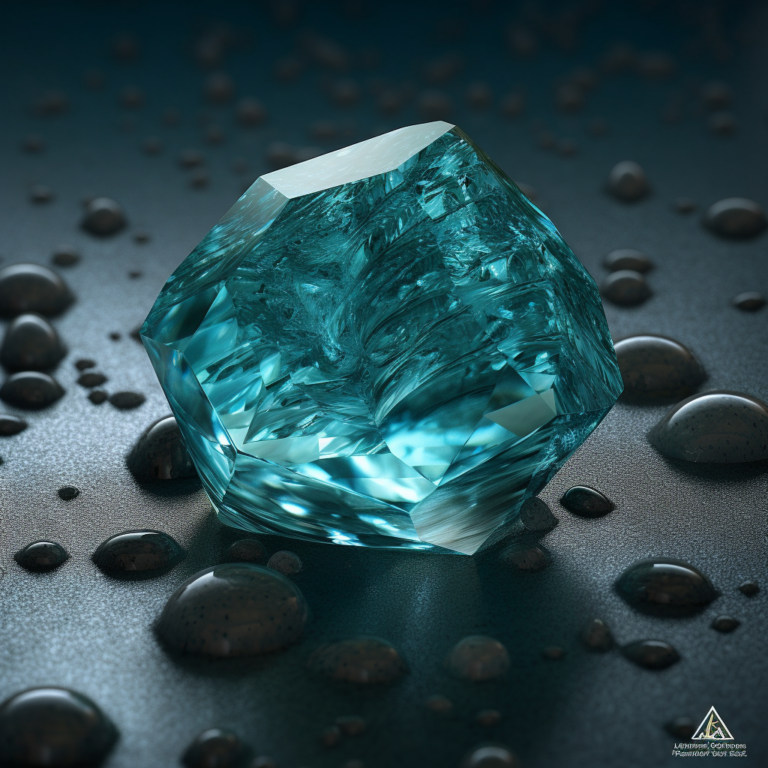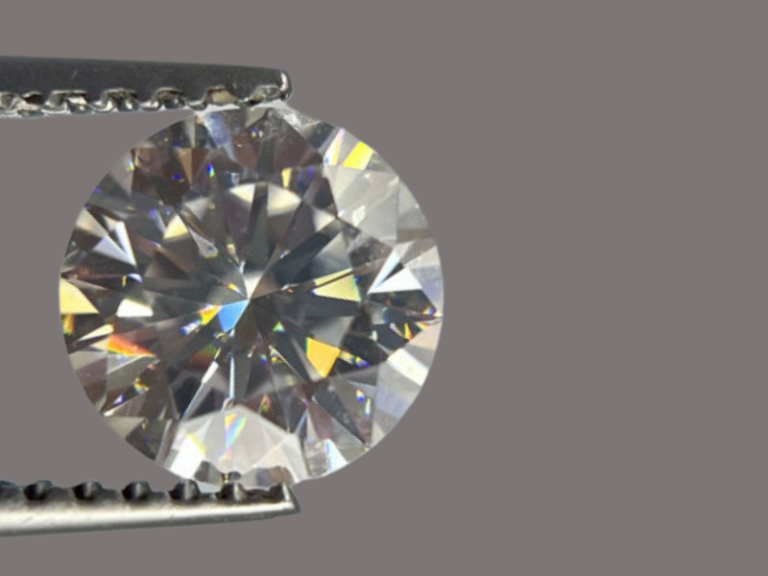The Hidden Treasure of the Red Sea: The Enigmatic Red Sea Pearls
The Red Sea, a globally recognized treasure trove of biodiversity, hides another gem within its depths: the exquisite Red Sea Pearls. Derived from the Pinctada margaritifera erythraensis, a unique variety of pearl oyster endemic to this sea, these pearls shimmer in captivating hues of silver, kissed with champagne undertones.
In This Article
Unveiling the Mystery Behind Cultured Red Sea Pearls

Culturing pearls in the Red Sea is no easy task. It requires a precise balance of environmental conditions, expert knowledge, and unwavering patience. Nonetheless, the results are breathtakingly beautiful pearls that carry with them an aura of mystery and an echo of the Red Sea’s vibrant aquatic life.
Cultured Red Sea Pearls offer a unique allure that transcends beyond their aesthetic charm. They whisper tales of the region’s rich historical and cultural heritage, reflect the resilience of the Pinctada margaritifera erythraensis, and signify the painstaking effort that goes into their cultivation.
As we delve deeper into the world of Red Sea Pearls, we invite you to embark on a journey that interweaves science, history, culture, and the tantalizing allure of these enigmatic gems.
An In-depth Look at the History of Red Sea Pearls
Pearling in the Red Sea: A Historical Perspective
Pearling, the act of diving to collect pearls from oysters, has been a part of Red Sea’s rich history for millennia. Ancient communities along the Red Sea’s shores depended on the sea for their sustenance and prosperity. Among these sea treasures, pearls held a special status. Not only did they serve as valuable trading commodities, but they also carried significant cultural and symbolic meanings.
Cultural Heritage and Significance of Red Sea Pearls

In the ancient world, Red Sea Pearls were not just gemstones; they were stories personified and captured within a shell. These pearls were thought to bring luck, protection, and prosperity, leading to their high demand in local and international markets. Pearls also became vital status symbols among the elites, signifying wealth, power, and elegance.
The Politics of Pearls: How Political Climate Impacted the Red Sea Pearl Industry
Like every profitable industry, the Red Sea Pearl trade was influenced by political dynamics. Over time, various empires and nations sought control over the lucrative pearl diving areas in the Red Sea. Unfortunately, the turbulent political climate often led to the exploitation of divers and the overharvesting of the precious pearl oysters.
The history of Red Sea Pearls is not just a tale of beauty and bounty; it’s also a poignant reminder of the politics and power play that can come between humanity and nature’s treasures. As we move forward, it’s crucial to remember our past and ensure a sustainable and ethical future for the Red Sea Pearl industry.
Pinctada margaritifera erythraensis: The Birth Giver
The Unique Red Sea Pearl Oyster: Pinctada margaritifera erythraensis
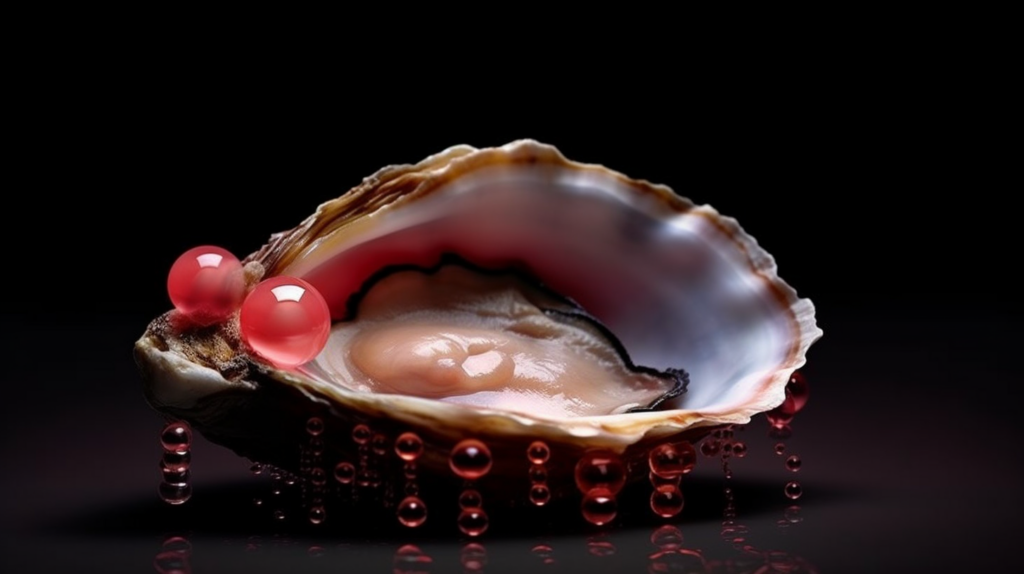
Pinctada margaritifera erythraensis is the exclusive producer of the Red Sea Pearls. This distinctive oyster subspecies thrives in the saline waters of the Red Sea, producing pearls of a unique color and lustre. These oysters are renowned for their resilience, withstanding the Red Sea’s challenging environment and contributing to the rarity of the pearls they yield.
Comparison with the Tahitian Pearls: A Tale of Two Subspecies
While both the Red Sea and Tahitian pearls are borne from the same species – Pinctada margaritifera, the subspecies erythraensis unique to the Red Sea creates a stark difference in the pearls’ attributes. Tahitian pearls are famous for their dark hues and often larger size. In contrast, Red Sea Pearls display a captivating champagne undertone, appear more luminous, and are usually of a smaller size.
Despite these differences, both Red Sea and Tahitian pearls embody their own charm, captivating pearl and gemstone enthusiasts worldwide. Their distinctiveness is a testament to the amazing biodiversity of our planet’s oceans and the influence of specific environmental conditions on pearl formation.
The Journey of Cultivating Red Sea Pearls
The Challenges and Limitations of Red Sea Pearl Cultivation
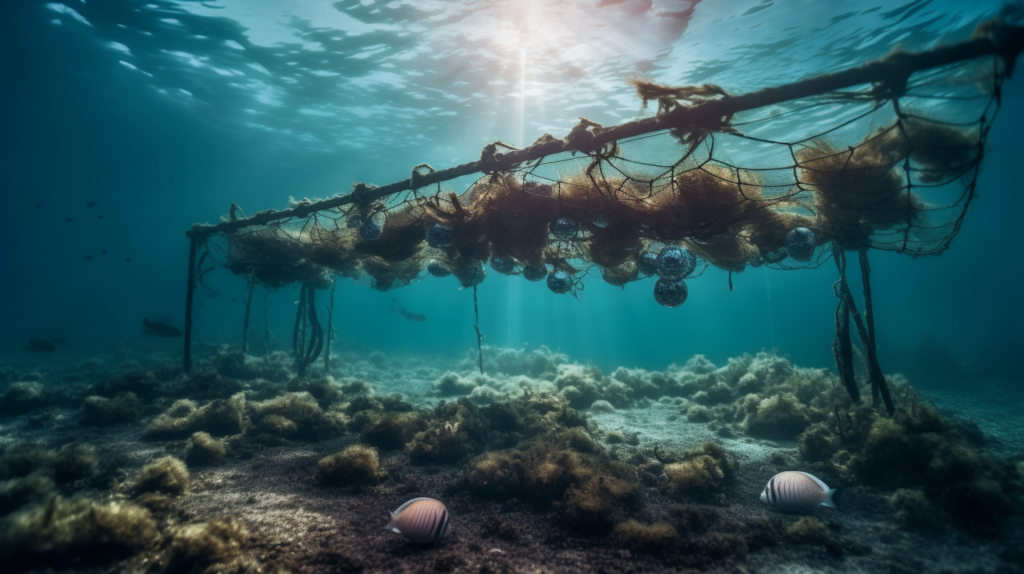
Cultivating Red Sea Pearls is a delicate balancing act. The Pinctada margaritifera erythraensis oysters require specific water temperatures, saline levels, and nutrient profiles to thrive and produce pearls. Additionally, these conditions must remain stable throughout the pearl formation period, which may span several years.
Moreover, the Red Sea’s rough waters and unpredictable weather conditions add to the complexity of pearl farming. These factors lead to high mortality rates among the oysters, thereby reducing the yield of pearls and contributing to their rarity.
Past Attempts and Failures of Red Sea Pearl Farming
The challenging conditions of the Red Sea have led to several failed attempts at establishing commercial pearl farms. Despite these setbacks, each failure enhances our understanding of the intricate balance required for the successful cultivation of Red Sea Pearls.
The history of pearl farming in the Red Sea serves as a critical reminder of the challenges we face in harnessing nature’s splendour. It underlines the need for respecting the natural environment, understanding its limitations, and working towards sustainable and ethical practices to safeguard the future of the Red Sea Pearl industry.
The Unmatched Allure of Red Sea Pearls
The Unique Colors of Red Sea Pearls: Silver with a Champagne Twist

The Red Sea Pearls outshine many of their counterparts with their distinct color palette. These pearls radiate with a silvery base color, accentuated with enchanting champagne undertones that vary in intensity depending on light conditions. This unique color combination sets Red Sea Pearls apart, lending them a regal and ethereal charm.
Red Sea Pearls Vs. Other Pearl Varieties: A Battle of Beauty and Rarity
When compared with other pearl varieties, Red Sea Pearls hold their ground with their unique beauty and rarity. Unlike the commonly seen white pearls or the dark Tahitian pearls, the Red Sea Pearls are a mesmerizing blend of silver and champagne hues.
Moreover, their rarity, bestowed by the challenging cultivation conditions, adds to their allure. Owning a piece of Red Sea Pearl jewelry is akin to owning a rare piece of nature’s artistry. It’s a treasure that holds within its iridescent layers, the echoes of the Red Sea’s waves, the patience of the oyster, and the timeless allure of a gem that has fascinated civilizations for millennia.
Pearl Farming and Sustainability: An Environmental Perspective
The Environmental Impact of Red Sea Pearl Farming
While pearl farming holds economic potential, it’s crucial to consider its environmental implications. Overharvesting of pearl oysters can disrupt the ecological balance of the Red Sea, impacting not only the oyster population but also other marine life that shares the same habitat.
Moreover, pearl farms can generate organic waste that, if not properly managed, can harm the local marine ecology. In the Red Sea, where water circulation is limited, it’s especially crucial to manage waste effectively to prevent local water pollution.
Sustainability Considerations in the Red Sea Pearl Industry
The path to a sustainable Red Sea Pearl industry is one that respects both the economic aspirations and the ecological health of the Red Sea. Sustainable practices such as limiting the number of pearl oysters harvested, implementing waste management measures, and monitoring the health of the oyster population can help mitigate the environmental impact.
Moreover, conducting ongoing research into pearl cultivation techniques can pave the way for increased yields without compromising the well-being of the oysters or the marine environment. Through such measures, we can foster a future where the allure of Red Sea Pearls continues to captivate hearts without being a burden on our precious marine ecosystems.
The Commercial Viability of Red Sea Pearls
Potential Market Demand for Red Sea Pearls
Given their unique allure and rarity, Red Sea Pearls have the potential to carve out a significant niche in the global pearl market. These pearls can cater to discerning consumers who value not just the beauty of a gemstone but also its uniqueness and the story it tells.
Their appeal extends beyond the jewelry industry, reaching collectors, historians, and those with a penchant for rare and precious items. Furthermore, the allure of Red Sea Pearls also holds potential for tourism, offering a unique attraction for visitors to the Red Sea region.
The Rarity Factor: How Scarcity Drives Demand in the Red Sea Pearl Market
In the world of gemstones, scarcity often drives demand. The challenging cultivation conditions, coupled with the unique beauty of the Red Sea Pearls, make them a coveted item. Potential buyers are often willing to pay a premium for these rare gems, further enhancing their commercial viability.
However, it’s crucial to balance the profit-driven pursuits with environmental considerations. Overexploitation in response to market demand could lead to ecological damage and ultimately, the depletion of this precious resource. Therefore, a sustainable approach is vital to the commercial success of the Red Sea Pearl industry.
Summary Of Discussion
The Future of the Red Sea Pearl Industry: Hope or Hype?
As we delve into the enthralling world of Red Sea Pearls, we are bound to ponder on the future of this industry. Is it a realm of hope or just fleeting hype? The answer lies in our approach towards this exquisite resource. With a careful balance of economic aspirations and environmental sustainability, the Red Sea Pearl industry can indeed hold a future of promise, where the pearls continue to captivate hearts without burdening the marine ecosystems.
The Red Sea Pearls: A Gemstone Enthusiast’s Dream Come True
For a gemstone enthusiast, Red Sea Pearls are a dream come true. They encapsulate within their lustrous layers, the mesmerizing beauty of the Red Sea, the resilience of the Pinctada margaritifera erythraensis, and the patience of pearl cultivators. They are a testament to the timelessness of nature’s beauty, the persistence of humankind, and the captivating allure that unfolds when these two forces intersect.
Frequently Asked Questions (FAQs)
What are Red Sea Pearls and why are they unique?
Red Sea pearls are a rare variety of pearls, cultivated in the Red Sea. They are characterized by their unique silver color with a ‘champagne twist’. Their rarity and unmatched allure set them apart from other pearl varieties.
What is the history and cultural significance of Red Sea Pearls?
Red Sea pearls have a rich history dating back centuries. They have long been cherished in many cultures for their beauty, and have even played significant roles in the politics of the regions surrounding the Red Sea. Their cultural heritage and significance are deeply intertwined with the history of pearling in the Red Sea.
What challenges are faced in the cultivation of Red Sea Pearls?
Red Sea pearl cultivation is fraught with challenges and limitations. Past attempts at farming these pearls have met with various failures, largely due to environmental factors and the unique characteristics of the Red Sea Pearl Oyster, Pinctada margaritifera erythraensis.
How does the Red Sea Pearl farming impact the environment, and what considerations are taken regarding sustainability?
The environmental impact of Red Sea Pearl farming is substantial, affecting both the marine ecosystem and the local communities. The cultivation practices aim to be as sustainable as possible, focusing on maintaining the balance of the ecosystem and the long-term viability of the pearl farming industry.
What is the commercial viability and potential market demand for Red Sea Pearls?
Given their rarity and unique beauty, Red Sea pearls have a high potential market demand. Scarcity is a significant factor that drives demand in the Red Sea Pearl market. However, the commercial viability of these pearls largely depends on successful cultivation practices and the ability to meet sustainability standards.


